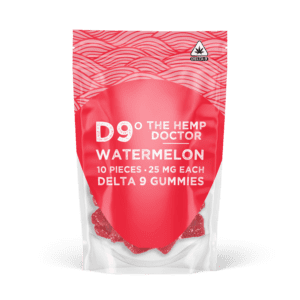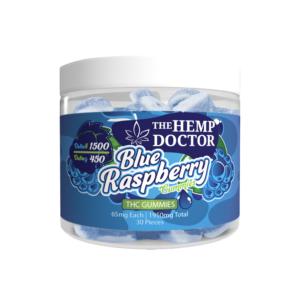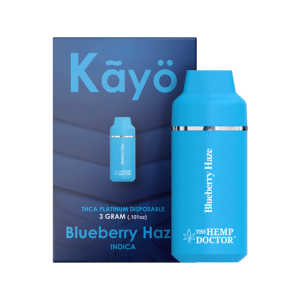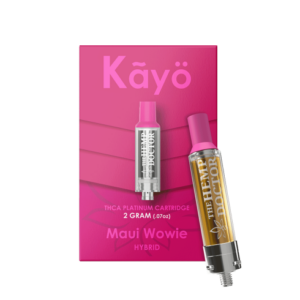Topping cannabis plants is a tried-and-true training technique cultivators swear by for producing bushier plants, bigger yields, and better light distribution. By carefully cutting the main stem at just the right time, growers can encourage the plant to redirect its energy into multiple main colas instead of one.
In this guide, we’ll break down how to top cannabis plants for explosive growth. From the benefits and timing to the tools and methods you need, you’ll get a step-by-step approach to mastering this high-impact training method.
Benefits of Topping Cannabis Plants
Topping is one of the most widely used high-stress training (HST) techniques in cannabis cultivation. Here are the benefits of topping cannabis plants:
Canopy Control
One of the most immediate benefits is enhanced canopy control. By snipping off the main central stem, growers essentially reset the plant’s growth pattern, prompting it to send energy to multiple branches instead of just one.
This leads to more even vertical growth and prevents plants from becoming too tall or lanky. This is especially important in indoor setups where space and height can be limited.
Greater Bud Production
Beyond controlling height, topping encourages greater bud production. In an untopped plant, the apical dominance (natural tendency to grow one tall main cola) means that energy is focused on a single flower cluster.
Once topped, the plant redistributes its growth hormones, resulting in two or more new main colas and increased lateral branching. Each of these new tops can become just as large and potent as the original, essentially multiplying the yield potential.
Enhanced Airflow and Light Exposure
Improved light exposure and airflow is another top benefit of topping. A flatter, wider plant structure allows light to reach more leaves and bud sites evenly, leading to better photosynthesis and healthier development.
It also reduces the risk of mold and mildew by improving ventilation throughout the canopy, especially important for dense, resin-heavy strains prone to moisture retention.
Ease in Training Cannabis Plants
Lastly, topping can make training and maintenance much easier throughout the vegetative stage. Topped plants respond better to low-stress training (LST), SCROG setups, and even mainlining, giving cultivators more control over the shape and performance of their crop.
Materials Needed
You don’t need a high-tech setup to successfully top your cannabis plants. You just need a few essential tools and the right conditions:
1. Sharp, Sterilized Pruning Scissors or Blade
A clean cut is critical. Use precision trimming scissors or a sharp blade that’s been sterilized with alcohol to prevent infection or plant stress.
2. Rubbing Alcohol (Isopropyl Alcohol)
Keep this on hand to disinfect your scissors or blade before and after each cut. This minimizes the risk of spreading pathogens.
3. Gloves (Optional)
Wearing disposable gloves keeps your plants safe from contamination and protects your hands from sticky resin.
4. Plant Markers or Tape (Optional)
Useful for marking which plants have been topped and when, especially if you’re working with multiple plants in staggered cycles.
5. Support Stakes or Garden Ties (Optional)
As your plant grows bushier, you may want to provide gentle support to new branches to encourage outward growth and prevent breakage.
6. Notebook or Grow Journal (Optional but Recommended)
Track topping dates, strain response, and growth progress. This helps refine your technique over time.
Step-by-Step Guide into Topping Cannabis Plants
Step 1: Choose the Right Time
Wait until your plant has developed 4–6 nodes (sets of leaves). Topping too early can stunt growth, and too late may slow recovery. Most growers top during the vegetative stage when the plant is healthy and actively growing.
Step 2: Prepare Your Tools
Before you make any cuts, sterilize your pruning scissors or blade using rubbing alcohol. This prevents bacteria or fungus from entering the fresh cut.
Step 3: Identify the Top Node
Look for the main stem’s newest growth. Count up from the base of the plant and locate the top above the 4th or 5th node. This ensures the plant is strong enough to handle the stress and redirect energy properly.
Step 4: Make the Cut
Using your sterilized scissors or blade, snip just above the node you’ve selected. Make a clean, horizontal cut. Don’t crush the stem or tear the tissue.
Step 5: Monitor Recovery
Your plant may look a little shocked at first. Over the next few days, watch for new growth. You’ll see two main colas forming from the node just beneath your cut. This is a sign the topping was successful.
Step 6: Provide Support if Needed
As your plant begins to grow outwards rather than upwards, you can use support stakes or garden ties to gently train the new branches, maximizing light exposure and airflow.
Step 7: Track Your Progress
If you’re topping multiple plants or planning future toppings, use a notebook or grow journal to track dates, strain responses, and how the plants recover. This helps fine-tune your technique for future grows.
When Should You Top Cannabis Plants?
Topping should be done during the vegetative stage, once the plant has developed 4–6 nodes (sets of true leaves). This usually happens around week 3–5 after germination, depending on the strain and growing conditions. At this point, the plant is strong enough to recover from the stress and redirect its growth.
Topping too early can stunt the plant or even kill a young seedling. Topping too late such as during the flowering stage can disrupt bud development and hurt yields.
| 📌 Pro Tip: The ideal time is when the plant looks healthy, vigorous, and has a thick enough main stem to support new branching. Most growers look for the 5th node and cut just above it to encourage even canopy growth. |
Secret Topping Tips Cultivators Gate-Keep
You won’t always find these in grow guides but experienced growers know these pro tips can make or break your topping success:
1. Always Top in the Morning
Plants recover faster when topped early in the light cycle. That’s when their metabolic rate is high, and stress responses are most efficient, meaning faster healing and less shock.
2. Use Sharp, Sterilized Tools
A clean cut is a happy cut. Dirty or dull scissors can crush tissue and invite infections. Always sterilize your blades with alcohol before each topping session.
3. Don’t Top All Plants at Once
If you’re growing multiple phenos or strains, top a few plants first and observe how each reacts. Some genetics handle topping like champs, others sulk, or worse.
4. Watch the Moon (Yes, Really)
Some old-school cultivators top during the waxing moon phase, when plant sap is rising. While not scientifically proven, many swear it boosts growth and healing time.
5. Top Above the 5th Node, No More, No Less
Topping above the 5th node gives you the best balance between plant stability and future growth structure. Anything lower can reduce yield; anything higher gives you less canopy control.
6. Pre-Hydrate Before the Cut
Give your plant a solid watering the day before you top. Hydrated plants handle stress better and recover more quickly.
Topping Versus Fimming: Which is Better?
Topping and FIMming (short for “F**k I Missed”) are both high-stress training (HST) techniques used to boost yield and control cannabis plant shape but they serve slightly different goals.
Topping: Clean Cut, Predictable Results
Topping involves cutting the entire main shoot just above a node, usually the 5th. This forces the plant to redirect energy into two new main colas, encouraging a symmetrical “Y” shape and flatter canopy.
Best for: Tight node spacing, even canopy training, SCROG setups
Downside: More stressful; slows growth temporarily
FIMming: Messy Cut, Bushy Results
FIMming involves trimming about 75% of the new growth at the top. Done right, this can result in 3–8 new colas instead of just two.
Best for: Maximizing tops with less shock, compact bushy growth
Downside: Less predictable, messy shape if done wrong
So, which is better? It depends on your grow goals. If you want structured control and even colas? Topping is your move. If you want a bushier plant with multiple tops but less control? Try FIMming. Some growers even use both techniques in the same grow which is topping first, then FIMming later.
Conclusion
Whether you choose topping for control or FIMming for volume, both techniques can dramatically improve your cannabis yields and plant structure when done right. The key is timing, precision, and understanding your plant’s response. Don’t be afraid to experiment. Every strain reacts differently, and every grow teaches you something new.







